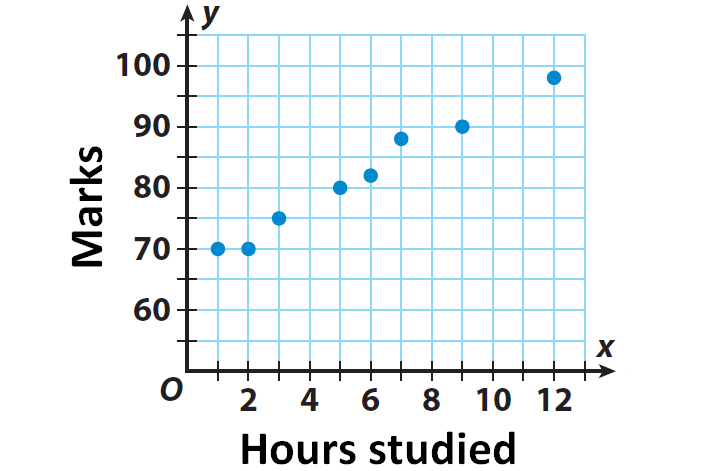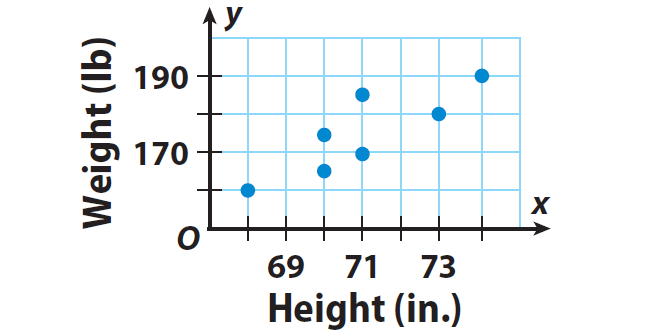IDENTIFYING FUNCTIONS USING GRAPHS
Graphs can be used to display relationships between two sets of numbers. Each point on a graph represents an ordered pair. The first coordinate in each ordered pair is the input value. The second coordinate is the output value. The graph represents a function if each input value is paired with only one output value.
Example 1 :
The graph given below shows the relationship between the number of hours students spent studying for an exam and the marks scored in the exam. Determine whether the relationship represented by the graph is a function.

Solution :
From the graph, it is clear that if a students spends 2 hours for studying, he will be able to score 70 marks in the exam. And if he spends 9 hours for studying, he will be able to score 90 marks in the exam.
So, we can consider the number of hours of studying as input values and marks scored in the exam as output values.
The points represent the following ordered pairs in the form (input, output) or (x, y) :
(1, 70), (2, 70), (2, 85), (3, 75), (5, 80), (6, 82), (7, 88), (9, 90), (9, 95) and (12, 98).
In the above order pairs, there is only one output value for each input value. And no input value has more than one output value.
Since, there is only one output value for each input value, the relationship represented by the graph is a function.
Example 2 :
The graph shows the relationship between the heights and weights of the members of a basketball team. Is the relationship represented by the graph a function ? Explain.

Solution :
From the graph, it is clear that if the height of a member is 73 inches, his weight will be 180 lbs.
So, we can consider the height as input value and weight as output value.
The points represent the following ordered pairs in the form (input, output) or (x, y) :
(68, 160), (70, 165), (70, 175), (71, 170), (71, 185), (73, 180) and (74, 190).
Notice that 70 is paired with both 165 and 175, and 71 is paired with both 170 and 185. These input values are paired with more than one output value
Since, there is more than one output value for the input values 70 and 71, the relationship represented by the graph is not a function.
Kindly mail your feedback to v4formath@gmail.com
We always appreciate your feedback.
©All rights reserved. onlinemath4all.com
Recent Articles
-
SAT Math Problems on Rates
May 02, 24 02:57 AM
SAT Math Problems on Rates -
Trigonometry Cofunction Identities
Apr 30, 24 09:01 PM
Trigonometry Cofunction Identities -
Worksheet on Unit Rates
Apr 30, 24 08:50 PM
Worksheet on Unit Rates
